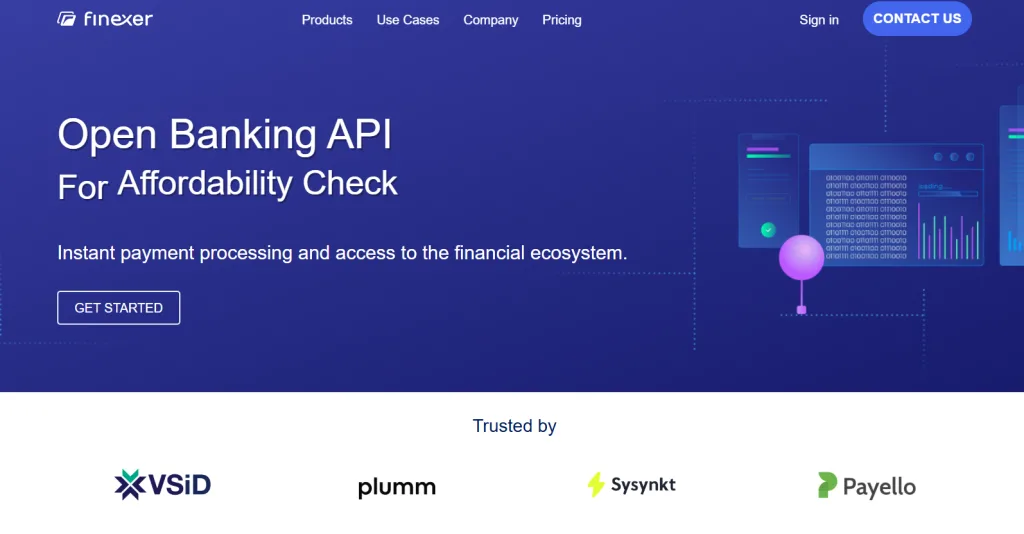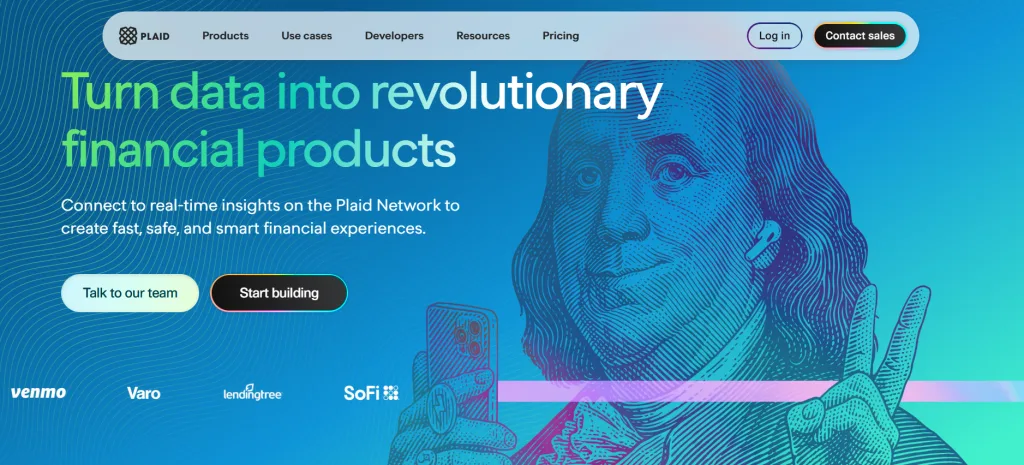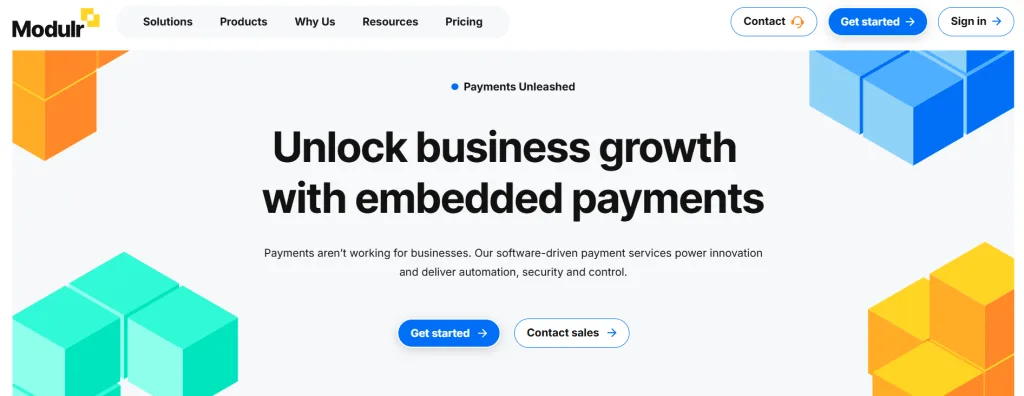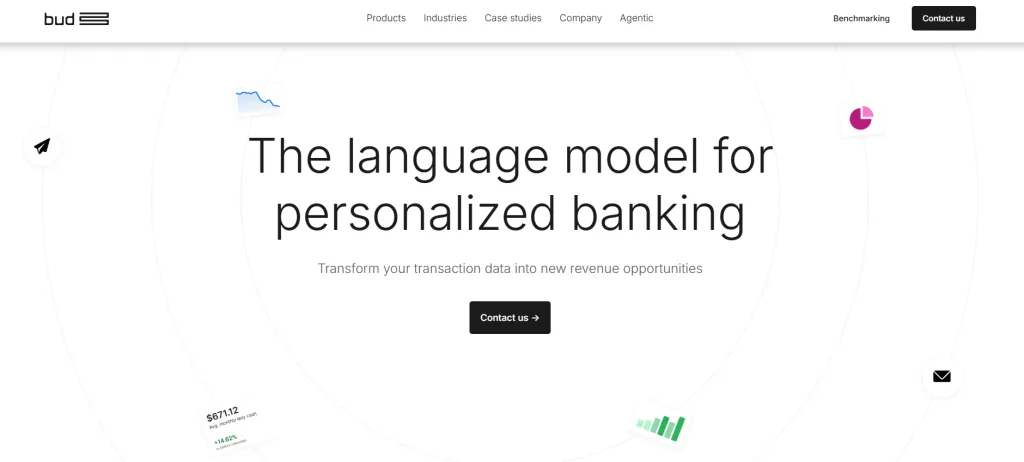Why accounting platforms need automated bank reconciliation
Manual reconciliation is one of the most time-intensive tasks in accounting. Firms still spend hours pulling PDF bank statements, cross-checking transactions, and correcting errors that slip through. For platforms building accounting software, this creates both a compliance risk and a poor client experience.
By working with the right Open Banking providers, you can bring automated bank reconciliation directly into your platform. Instead of matching entries by hand, firms get real-time bank feeds, enriched transaction data, and audit-ready records that integrate seamlessly with ledgers. This not only strengthens accounting compliance but also helps accounting platforms in the UK scale faster.
📚 How to Create a Xero Alternative
1. Finexer

How does it support automated bank reconciliation
Finexer is built around the needs of UK accountants. By connecting directly to 99% of UK banks, it enables accounting platforms to automate reconciliation in real time. Its FCA-authorised AIS and PIS framework ensures every data pull and payment initiation meets strict compliance standards, making it an ideal fit for firms that must stay audit-ready.
Standout capabilities
- FCA authorised for both AIS and PIS
- 99% UK bank coverage, from Barclays and Lloyds to Monzo and Starling
- Real-time bank feeds with webhook updates for instant refresh
- Transaction data enrichment that improves categorisation and reduces duplicate entries
- Audit-ready exports aligned with Making Tax Digital (MTD)
Where it adds value for accounting platforms
For UK-focused accounting platforms, Finexer simplifies accounting software integration by mapping transactions cleanly into ledgers. Developers benefit from a sandbox and well-structured APIs, while accountants gain accurate, enriched transaction data. The combination of automated bank reconciliation and transaction data enrichment makes it easier to close books quickly and maintain compliance without adding manual steps.
Watch-outs before adopting
Finexer is UK-only, which means platforms with international coverage may need an additional provider for non-UK banks.
Best fit for
Finexer is the best fit for accounting platforms in UK that need automated bank reconciliation delivered 2–3x faster than market averages, with MTD-compliant exports and white-label options.
Get Started
Connect today and see why businesses trust Finexer for secure, compliant, and tailored open banking solutions.
Try Now2. Plaid

How does it support automated bank reconciliation
Plaid is one of the most widely known Open Banking providers, with APIs that connect to thousands of financial institutions worldwide. For accounting platforms, Plaid’s strength lies in its transaction data enrichment capabilities, helping automate reconciliation by providing categorised and normalised data streams that reduce manual review.
Standout capabilities
- Global reach with UK and EU coverage, plus strong North American connections
- Rich transaction metadata that supports reconciliation matching rules
- Historical transaction depth for backfilling ledgers and opening balances
- Advanced developer tools and SDKs for smooth accounting software integration
Where it adds value for accounting platforms
Plaid’s data-first approach makes it a solid choice for platforms that want to move beyond basic transaction pulls and offer accountants real-time bank feeds enriched with merchant cleaning and categorisation. For firms serving clients across multiple regions, Plaid’s international footprint allows automated bank reconciliation to scale beyond the UK.
Watch-outs before adopting
Plaid’s UK bank coverage, while improving, is not as comprehensive as UK-first providers. In addition, pricing can be complex for firms that only require UK-specific services.
Best fit for
Plaid is best suited for accounting platforms that prioritise transaction data enrichment and need reconciliation workflows to span multiple geographies, not just the UK.
What is automated bank reconciliation?
Automated bank reconciliation is the process of using Open Banking APIs to fetch live bank transactions and match them automatically with accounting records. It reduces manual checks, speeds up close cycles, and improves accuracy.
Why is automated bank reconciliation important for accounting platforms?
It eliminates manual work, ensures audit-ready records, and supports accounting compliance under HMRC and FCA requirements. For platforms, it also improves client retention by offering modern, time-saving features.
3. Tink

How does it supports automated bank reconciliation
Tink, part of Visa, is a leading Open Banking provider in Europe that also supports UK banks. Its strength is in handling complex, multi-entity accounting setups. For accounting platforms serving clients with cross-border accounts, Tink enables automated bank reconciliation by pulling in consolidated, enriched data from multiple regions into one ledger.
Standout capabilities
- Broad EU coverage with growing UK connectivity
- APIs designed for bulk and multi-bank data aggregation
- Real-time transaction feeds with incremental syncs
- Data enrichment that supports categorisation, duplicates handling, and reconciliation accuracy
Where it adds value for accounting platforms
Tink is especially valuable for accounting platforms that cater to mid-sized and larger firms with clients spanning different jurisdictions. By providing real-time bank feeds across Europe and the UK, it helps automate reconciliation in multi-entity environments. Its accounting software integration flexibility means developers can plug into different ledger structures while maintaining consistency in data quality.
Watch-outs before adopting
Tink’s UK-first capabilities are not as deep as local providers, which can mean gaps in coverage for firms focused purely on the UK market. Integration complexity may also be higher for smaller teams.
Best fit for
Tink is best suited for accounting platforms UK that also handle cross-border entities and need scalable APIs to deliver automated bank reconciliation across multiple regions.
4. Modulr

How does it support automated bank reconciliation?
Modulr is FCA-regulated for both payments and account services, making it a strong option for accounting platforms that want to combine automated bank reconciliation with embedded payments. By integrating Modulr’s APIs, firms can match incoming and outgoing transactions against ledger entries in real time while also initiating supplier or payroll payments from the same platform.
Standout capabilities
- FCA authorised for AIS and PIS with additional electronic money institution (EMI) permissions
- Integrated payments and data feeds for a single-source workflow
- Real-time bank feeds that sync balances and transactions instantly
- APIs built for high-volume processing, supporting payroll, supplier disbursements, and client accounts
Where it adds value for accounting platforms
Modulr’s strength is in combining reconciliation with money movement. For accounting platforms, this means fewer integrations are needed; one API can cover both accounting compliance and operational payouts. With features like bulk payments and embedded client accounts, platforms can scale beyond reconciliation into full financial operations. This makes Modulr a compelling option for accounting software integration when automation extends into payment initiation.
Watch-outs before adopting
Pricing is more attractive for firms with significant transaction volumes. For smaller accounting platforms, the commercial model may be less flexible compared to usage-based providers.
Best fit for
Modulr is best for accounting platforms UK that want a provider covering both payments and automated bank reconciliation in one infrastructure.
5. Bud

How does it support automated bank reconciliation
Bud positions itself as a data intelligence layer on top of Open Banking connections. For accounting platforms, this means it doesn’t just provide raw bank feeds, it delivers enriched, categorised transaction data that makes automated bank reconciliation more accurate and less reliant on manual matching.
Standout capabilities
- Strong focus on transaction data enrichment with merchant cleaning and categorisation
- UK and EU bank coverage with FCA-authorised AIS connections
- APIs designed for developers building accounting software integration
- Insight layers that extend beyond reconciliation into affordability and income checks
Where it adds value for accounting platforms
For accountants, data quality is often the difference between an automated reconciliation that works and one that still requires manual effort. Bud’s ability to standardise and enrich transaction data makes it easier to align feeds with invoices, receipts, and ledger entries. For accounting platforms UK, this means reduced error rates and more reliable real-time bank feeds within reconciliation workflows.
Watch-outs before adopting
Bud is stronger on enrichment than coverage. While it connects to major UK banks, it may not match the depth of connectivity provided by larger aggregators.
Best fit for
Bud is best for accounting platforms that want to differentiate on the quality of reconciliation workflows, using enriched data to power automated bank reconciliation and reduce the need for manual oversight.
Choosing the Right Open Banking Provider for Automated Bank Reconciliation
For accounting platforms, the shift to automated bank reconciliation is no longer optional. Clients expect real-time accuracy, HMRC expects compliance, and firms want to save billable hours. The providers reviewed here- Finexer, Plaid, Tink, Modulr, and Bud each bring different strengths, from UK-first compliance to global coverage and deep transaction data enrichment.
The right choice depends on your platform’s scope:
- If you focus on UK accounting platforms with compliance at the core, Finexer offers the fastest route to FCA-approved automation.
- If your clients span multiple regions, Plaid or Tink extends reconciliation beyond the UK.
- If you want reconciliation and payments combined, Modulr provides both in a single API.
- If you want the cleanest transaction data to power your reconciliation engine, Bud adds categorisation and enrichment layers.
By embedding the right Open Banking provider, you can deliver real-time reconciliation, reduce errors, and build trust with clients through accurate, compliant financial records.
Which Open Banking providers are FCA authorised?
Providers like Finexer, Modulr, Bud, and Plaid are FCA-authorised for AIS, with some also supporting PIS. FCA authorisation ensures compliance with UK regulations.
Can automated bank reconciliation integrate with accounting software?
Yes. Leading providers offer accounting software integration capabilities, making it possible to plug directly into systems like Xero, QuickBooks, or bespoke ledgers while maintaining real-time bank feeds.
How do I choose the best provider for automated bank reconciliation?
Consider:
->UK vs international coverage
->Data enrichment quality
->Integration fit with your platform
->Deployment speed and onboarding support
->Pricing model
Stop relying on manual PDF checks. Connect with 99% of UK banks and deliver real-time bank feeds directly inside your accounting platform
